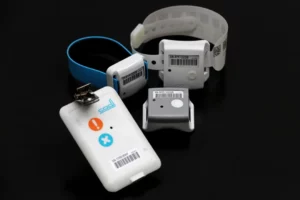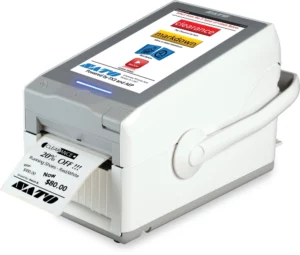RFID stands for “radio-frequency identification” and refers to a technique that uses radio waves to collect digital data contained in RFID tags or smart labels. RFID is comparable to barcoding in the sense that information from a tag or label is taken by a device and stored in a database.
RFID, on the other hand, provides a number of benefits beyond systems that employ barcode asset monitoring software. The most apparent difference is that RFID tag data could be read from a distance, while barcodes should be scanned using an optical scanner. If you’re thinking of installing an RFID solution, contact us now!
What is RFID and How Does it Work?
RFID corresponds to a cluster of technologies described as Automatic Identification and Data Capture (AIDC). With minimal or zero human interaction, AIDC techniques automatically recognize items, gather data about them, and transfer this data straight into computer programs. RFID systems are made up of three parts: an RFID tag or smart label, an RFID reader, and an RFID antenna.
RFID tags have an inbuilt circuit and an antenna that transfers data to an RFID reader. The radio waves are then converted by the reader into a more usable kind of data. The data acquired from the tags is subsequently sent to a host operating system via a communications gateway, where it can be saved in a database and reviewed afterwards.
What is RFID Tag?
An RFID tag transmits and receives data via an antenna and a microchip. The RFID reader’s chip is programmed with any information the user desires. RFID tags are classified into two types: active and passive.
Active RFID Tag
Active RFID tags are battery-powered and include an inbuilt battery to provide power. They are made up of three major components: a tag, an antenna, and an interrogator. An active RFID tag’s battery should provide enough power to operate for 3-5 years. When it expires, the entire unit must be changed.
There are 2 types of active RFID tags: beacons and transponders. Every few seconds, beacons shoot out an information ping, and their signals can be detected from long distances out. Since they transmit information so regularly, their batteries tend to drain faster.
To transmit data, transponders need the activation of a reader. When within range of each other, a reader initially transmits a signal to the transponder, which then pings back with the appropriate data. Transponders consume less power than beacons since they only operate when they are close to a reader.
The active RFID tag’s integrated power source enables the tag to communicate data to a reader without drawing power from the reader, like passive tags would. Furthermore, active tags may be detected from up to 30 meters away.
Passive RFID Tag
A passive RFID system consists of three major components: an RFID reader or interrogator, an RFID antenna, and RFID tags. Passive RFID tags rely on electromagnetic energy sent by an RFID reader. When a reader scans a passive RFID tag, it sends power to the tag, which charges it up sufficiently for the chip and antenna to transmit messages back to the reader. The scanner then sends this data to an RFID computer software for processing, but passive tags can only be identified from up to 6 meters away.
Passive RFID tags are classified into two types: inlays and hard tags. Inlays are often relatively thin and can be affixed on a variety of surfaces, and are suitable for “soft” environments such as inside stores. On the other hand, hard tags are, as the name implies, composed of a hard, durable substance like plastic or metal, which makes them ideal for harsher environments such as the desert or the ocean.
What is RFID Reader?
An RFID reader is the RFID solution’s brain and is required for any system to work. Readers, also known as interrogators, are units that use radio waves to interact with RFID tags. An RFID reader relays messages to the tag through radio waves. When triggered, the tag returns a wave to the antenna, which converts it to data.
RFID readers are normally classified as either stationary or portable RFID readers. Stationary readers stay in place and are generally installed on walls, tables, gateways, or other immovable surfaces. Mobile readers provide RFID tag scanning flexibility while also communicating with a host computer or smartphone.
What is RFID Antenna?
RFID antennas are essential components of an RFID system since they transform the RFID reader’s signals into radio frequency waves that RFID tags can detect. The RFID reader is unable to send and receive transmissions to RFID tags without some form of RFID antenna, regardless of whether it is integrated or standalone.
RFID antennas, unlike RFID readers, are passive devices that get power straight from the reader. When the reader’s power is delivered to the antenna, the antenna forms a radio frequency field, and a radio frequency signal is then communicated to the nearby tags. The antenna’s gain is the effectiveness with which it generates waves in a certain direction. Simply said, the stronger the gain, the more potent and far-reaching the radio frequency field of an antenna will be.
Benefits of RFID
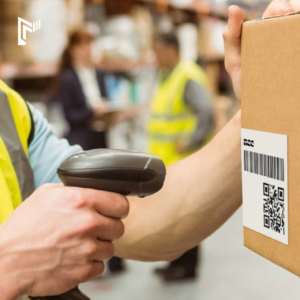
RFID is a versatile innovation with uses all through business – from influencing production processes to inspection and maintenance of machinery, handling assets and monitoring products from manufacturing to distribution.
RFID solutions serve organizations of all sizes by enabling them to quickly enhance efficiency and cut costs by automating operations and boosting asset utilization and quality. RFID is at the heart of the Internet of Things (IoT) and may serve as the foundation of a successful asset management system.
The benefits of using RFID technology include, but are not limited to:
Facilitated asset tracking and inventory management
Keeping track of inventory and equipment is a struggle for most businesses, whether it’s items on an assembly line, finished goods being shipped, industrial crates that have to be returned, or gadgets, electronics, and other high-value gear that frequently go missing. RFID systems provide a quick and dependable way of tracking them without needing to check each individual piece.
RFID applications allow you to see how many units of each sort you have and where they are in the system. From the moment goods are received by retailers, issued to manufacturers, and used to create a final product, you can trace them using RFID technology. This makes it simple to monitor inventories, do stock inspections and audits, and control ‘shrinkage.’
Improved production control
RFID is perfect for intricate or personalized production processes because it can recognize individual items or parts. RFID can be used, for example, to make sure that particular castings are packed with the accurate quantity of liquids and fired for the right amount of time, or that precise components eventually wind up on the appropriate assembly line. This reduces waste and increases efficiency.
Enhanced quality and traceability
RFID technologies can also assist in ensuring that items have gone through all of the necessary inspections and procedures, such as ensuring that a boiler has been properly constructed, examined, and authorized before being delivered, thereby enhancing quality and limiting the number of goods handed back. RFID labeling can help assure traceability by monitoring an item from its place of origin to its destination.
Improved data availability and accuracy
RFID eliminates transcription mistakes, redundant data, and “missing items” when it is used to gather data on a large quantity of things at the same time since data is captured and transmitted electronically. The usage of cloud-based solutions enables everyone in the business to access up-to-date information on the location or status of assets. Customers might also be given access to data.
Optimized safety (maintenance)
RFID systems enable businesses to track when apparatus and vehicles have been examined or when they are scheduled for inspection, and to prohibit their usage if specific requirements are not met. CheckedOK systems, for example, provide an effective approach to handling inspection and reporting regimes, assisting insurers and regulatory organizations in ensuring that rules are followed.
Saving money and time
RFID solutions may track the status of items and transfer the data to an enterprise resource planning or financial management system. As a result, they can eliminate the requirement for manual document filling and obsolete spreadsheets.
Fixed readers at crucial locations may save much more time, and in a production line, for instance, can completely eliminate the necessity of manual interference. Eliminating the need for manual labor saves both time and money since RFID systems can perform the tasks in a more timely and efficient manner, all the while reducing errors. When fewer workers are present and mistakes are made, less money would be spent on incomes and fixing errors.
What is RFID Asset Tracking?

Although there are numerous possibilities for streamlining the process of monitoring and tracking assets, there is a tracking solution that provides perfect efficiency at the lowest cost; RFID.
RFID asset tracking, in its most basic form, is a method of automating the monitoring and tracking of tangible assets. It operates by putting data into an RFID tag and linking it to a relevant asset. This information might span from name, situation, quantity, and position.
An RFID reader will collect the stored data by using the RFID tag’s continuously pulsing radio waves. Ultimately, it will be collected in a comprehensive asset tracking system where it is observed and acted upon.
The capacity to automate your tracking and monitoring operations seeks to eliminate the very error-prone ways of pen-and-paper. Among the additional advantages are:
- Keeping track of several assets at the same time
- Removing manual intervention
- Collecting data in real-time
- Enhancing asset visibility
- Locating missing or lost goods
- Increasing inventory accuracy
What is RFID for Supply-Chain Management?
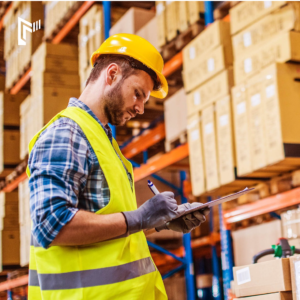
RFID is used to tally, rectify, and monitor individual products and boxes throughout the supply chain. This begins in the plant, where things are labeled at the source, and continues to the distribution hub, where orders are sifted before being dispatched to retailers. RFID counts each time an item reaches or exits a step along the way, and any errors are discovered and fixed.
The most noticeable advantages for RFID-enabled supply chains are increased precision, efficiency, and comprehensive visibility over the movement of commodities. Enhanced stock and individual order precision can contribute to top-line growth, less stock shortages, and decreased customer refunds for delivery errors.
What is RFID in Healthcare?

RFID’s ability to detect and evaluate thousands of items at once, as well as distinguish a single object beyond simply the sort of product it is, offers a vast array of possibilities to the healthcare industry.
One of the most significant advantages of RFID implementation in the healthcare industry is the ability to track patients in real time throughout hospital premises. By recognizing each patient uniquely, it also improves patient tally integrity.
RFID technology also helps hospitals monitor and locate medical supplies and equipment by delivering real-time location and data on all assets, making it easier for employees to find the equipment. The less time spent on this, the more time there is for patient care.
What is RFID in Retail?

Retailers using RFID technology have witnessed a significant boost in ROI after implementing RFID and have come to the realization that RFID cannot be substituted by another technology — over 80% of retailers agree that adopting RFID technology was the right call.
RFID technology delivers substantially more detailed information about items and shops. As a result, losses and theft are reduced by default. The most notable characteristic of RFID is its data-monitoring capability, which permits it to track the whereabouts of any object in real time. Anti-shoplifting sensors work in tandem with RFID technology, which allows all products to be traced as soon as a client goes through one of the doors that capture radio wave transmissions. This thus reduces the likelihood of product theft.
What is RFID for Industrial Safety?
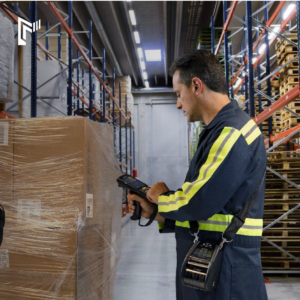
RFID technology has considerably decreased the danger of accidents between vehicles and pedestrians. RFID vicinity alerting systems provide an excellent solution. The idea is straightforward: the individual dons an RFID tag, and all workplace transportation vehicles on site are equipped with an RFID sensor (an antenna). When a person comes too close to a vehicle, both the driver and the person are warned.
The audio and visual alert indicates a significant accident risk. Both parties cannot disregard the warning, since RFID technology makes it extremely impossible to do so. Here are some of the most important reasons why RFID for industrial safety can help to decrease vehicle and worker accidents:
- RFID tags and readers don’t need a line-of-sight to work, so obstruction is not an issue.
- RFID tags and readers can be used for all types of industrial organizations and in different locations, which include building sites, warehouses, ports, stores, mines…
- Data analysis can help plan for potential risks ahead of time; managers can leverage documented event data to detect close calls, evaluate trends, generate reports, and monitor human and vehicle accidents to identify potential risks before they occur.
What is RFID for Food Safety?
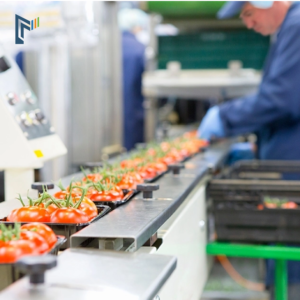
RFID for food safety is commonly used to monitor things throughout the supply chain and offer operational advantages, acknowledging the need to improve supply chain transparency and, ultimately, accountability. RFID for food safety systems can help organizations intercept potentially unsafe food before it finds their clients since they will have real-time data of what is in stock, allowing them to take precautionary steps more rapidly.
The effectiveness of RFID can aid in the growth of food distribution techniques. RFID can assist with everything from ensuring location-based precision for last-mile grocery delivery to running wholesome vending machines in areas like hospitals when cafeterias are shut, for example.
Final Thoughts
So, what is RFID? RFID (Radio Frequency Identification) is a wireless technology that consists of two elements: tags and readers. RFID technology, like any revolutionary technology, has its issues and challenges, but the benefits it provides are far more visible and significant.
RFID is a remarkable technology that has the capacity to be utilized for a wide range of applications, including supply chain management, food safety in the food and beverages industry, asset tracking, and much more.
RFID technology can increase efficiency and production by, for example, enabling improved inventory management to eliminate out-of-stock items. The formation of universal standards and the cost-effectiveness of applying this RFID technology might lead to its widespread acceptance in any business.
If you’re looking for the best RFID solution, then look no further. At Makamat, we are entirely dedicated to providing you with RFID solutions for your business to keep your products, equipment, and investments safe and up to all regulations and standards.
So, what are you waiting for? Get in touch with us now, and start giving your assets the attention they deserve. Take a moment to fill out our contact form, and a member of our team will be in touch with you shortly.
